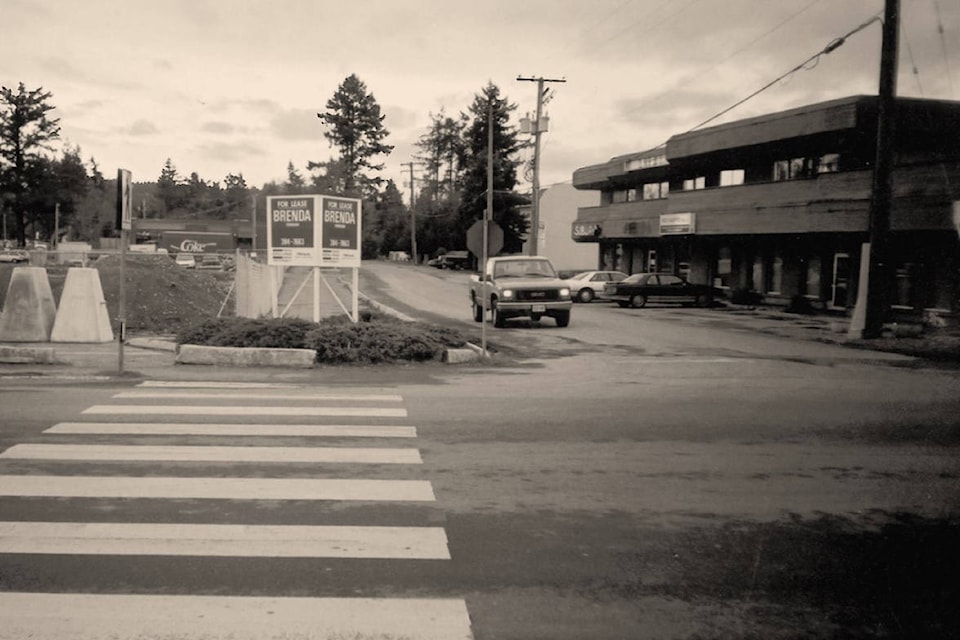Al Capp, the creator of the classic comic strip Li’l Abner (1934 to1977), set his story in the fictional town of Dogpatch.
He described Dogpatch as “an average stone-age community nestled in a bleak valley, between two cheap and uninteresting hills somewhere.” Within that context, the fact that the City of Langford was once commonly known as ‘Dogpatch’ speaks volumes about where the municipality once was, and how far it has journeyed to become one of the fastest growing communities in nation, according to Statistics Canada.
“When we were first incorporated in 1992, we were still called ‘Dogpatch’ by outsiders and, to a certain extent, the nickname was well-founded,” said long-time Langford Coun. Denise Blackwell, whose tenure with council started in 1992 and has continued, uninterrupted, since that time.
“We didn’t have streetlights or sidewalks or even sewers in most areas and it was almost impossible to find work in the community so people travelled into Victoria and elsewhere to work. We were sort of a backward bedroom community.”
Mayor Stew Young, who was elected as a councillor in 1992 and has served as mayor since 1993, recalled how when he graduated from Belmont Secondary school, very few of his classmates remained in Langford.
“My buddies couldn’t wait to get out. There were no jobs and frankly, it wasn’t a place you wanted to stay,” Young said, adding he was determined to make a difference in the community.
READ MORE: Business-like approach is good for government says Mayor Stew Young
Blackwell shared that vision for the community they both called home.
“Stew and I always imagined Langford as being a place where people could live, work and play and be proud to call home, but we knew that it was going to take a lot of work to get us there. We had vision for what the community would look like and we never lost sight of that dream and have worked to make it a reality,” she said.
According to Blackwell, the turnaround of Langford’s reputation and, some may argue character, began when Costco approached the municipality in 1994, seeking a deal to locate their store in the city.
“Several municipalities had turned Costco away for whatever reason, so when I got on the phone and said I was the mayor of Langford and wanted them to come here, at first they thought it was a prank call. I had to convince them that I was who I claimed and that I was serious,” Young recalled.
Blackwell has a clear memory of the negotiations with Costco as well, explaining that Langford had a situation on the Costco site where there was a private sewer that was failing.
“In order to get Costco we did a sewer specified area and had them pay for a good portion of the cost of the sewers out there. It’s a model of engagement that we’ve used with other retail outlets coming into Langford.”
It’s been more than 20 years since that first major victory, Young said, and Langford has never looked back. He said the municipality decided early on that it was going to roll out the red carpet for business and invite and support housing for people so they could stay here and work in those businesses. At the same time, Young stayed in Langford and built a business empire that has, at times, raised the ire of his critics.
But other big box retailers followed on Costco’s heels and today’s council has turned its attention to attracting other businesses, including the tech industry, in an effort to bring higher paying jobs to the community, according to Blackwell.
Naturally, the rapid change in the community has not been without its critics.
In 2014 a slate of local candidates openly, and unsuccessfully, challenged Young, Blackwell and the incumbent Langford council that they maintained was taking Langford down the wrong road.
From outside the municipality, Victoria Coun. Ben Isitt has been critical of Langford’s development at various times over the years and still maintains that, in the rush to develop Langford there have been negative environmental consequences. He explained that his concerns are rooted in what he sees as the loss of green space and the creation of unsustainable transportation patterns.
“Recreating Langford, with its rapid growth has not been great for the environment. All those people are having to drive everywhere and there hasn’t been a planned approach to deal with all that commuting. The transit service is inadequate and solutions involving initiatives like the E&N Rail corridor haven’t even begun to be addressed,” he said.
That is a sentiment shared in part by Reuben Rose-Redwood, an associate professor of geography and urban planning at the University of Victoria.
“I suppose it’s fair to say that, from a planning perspective, the rapid growth of Langford has presented some transportation challenges within the region, and for those who want to see every acre of green space preserved, it could be seen as a negative factor. But it’s important to note that it’s a lot easier to be critical if you’re already developed. At some point, you cut down the trees as well,” Rose-Redwood said.
